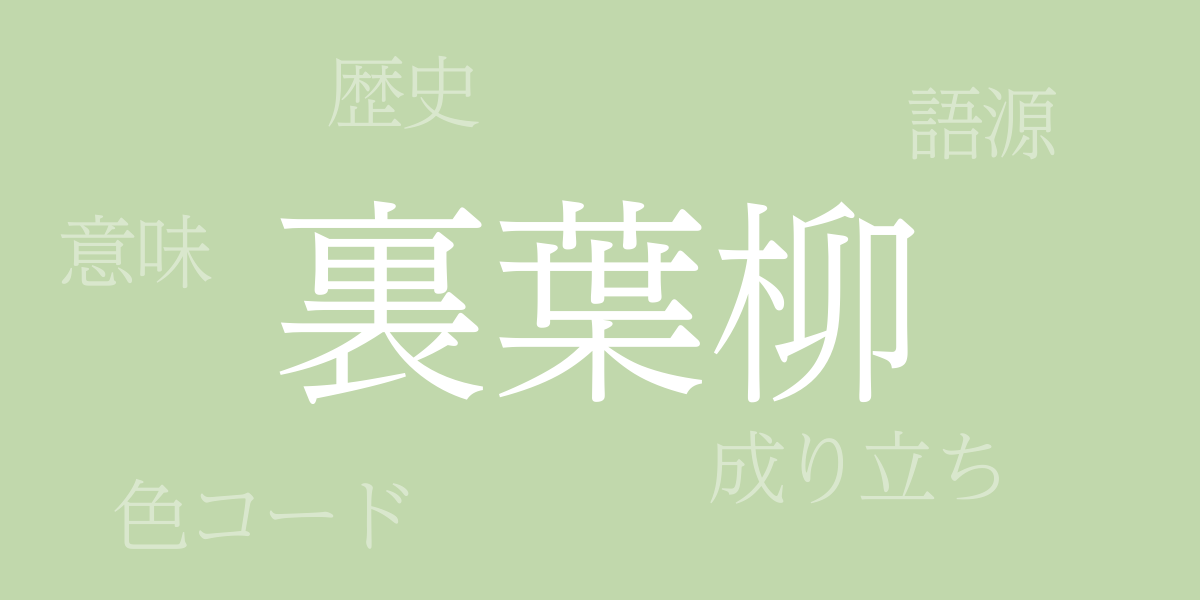Colors are a breath of culture, and Japanese traditional colors reflect the rich history and beauty of nature. Among them, ‘Uraha Yanagi (裏葉柳(うらばやなぎ))’ stands out with its unique calm and depth, leaving a serene impression on those who see it. This article delves into the allure of Uraha Yanagi, exploring its background, color code, Western name, and its role in Japanese culture.
About Uraha Yanagi (裏葉柳(うらばやなぎ))
Uraha Yanagi (裏葉柳(うらばやなぎ)) is one of Japan’s traditional colors, characterized by a light yellow-green hue. The name comes from the color on the underside of willow leaves, representing the soft light and shadows found in nature. It is commonly used in traditional Japanese art forms like kimonos and paintings, where it creates a peaceful and harmonious atmosphere.
History of Uraha Yanagi
The color Uraha Yanagi has been in use since the Heian period, closely intertwined with the lives of the Japanese people. By the Edo period, it was formally recognized as a color name, particularly popular as a color for kimonos. Over time, the nuances of this color have subtly shifted, but it has been carefully preserved within the Japanese sense of color.
Color Code of Uraha Yanagi
In modern times, the color Uraha Yanagi is also applied in digital and web design, necessitating a specific color code. Here is an example:
- HEX: #C1D8AC
- RGB: R:193 G:216 B:172
- CMYK: C:30 M:8 Y:40 K:0
Western Name for Uraha Yanagi
The Western name for Uraha Yanagi is often ‘Light Green,’ though this unique Japanese shade has elements that cannot be fully captured by Western color names. However, ‘Light Green’ serves as a reference point in international color exchanges when referring to Uraha Yanagi.
Summary on Uraha Yanagi
Uraha Yanagi is a Japanese traditional color that harmonizes with nature and evokes history. Its distinctive shade symbolizes the delicacy and depth of Japanese culture and continues to be cherished in various design fields today. As it becomes digitalized through color codes, the charm of Uraha Yanagi spreads globally, offering inspiration for new creations.

























